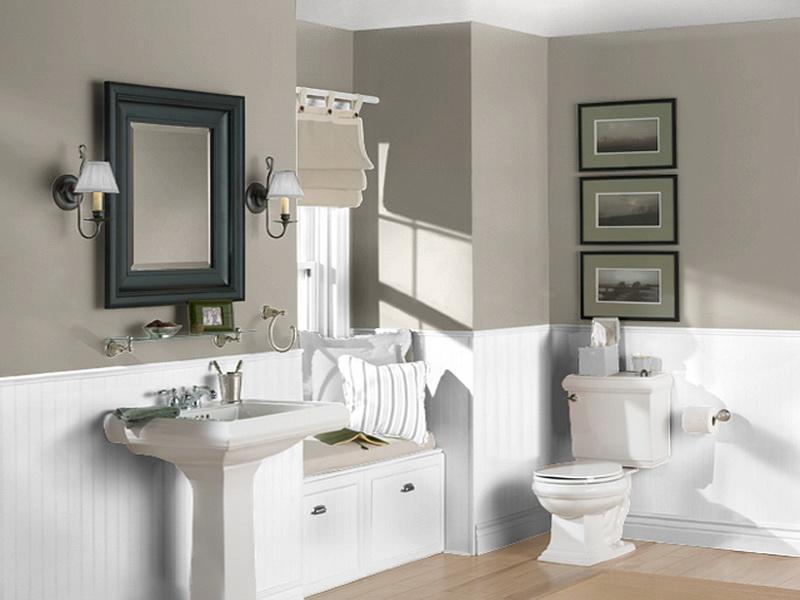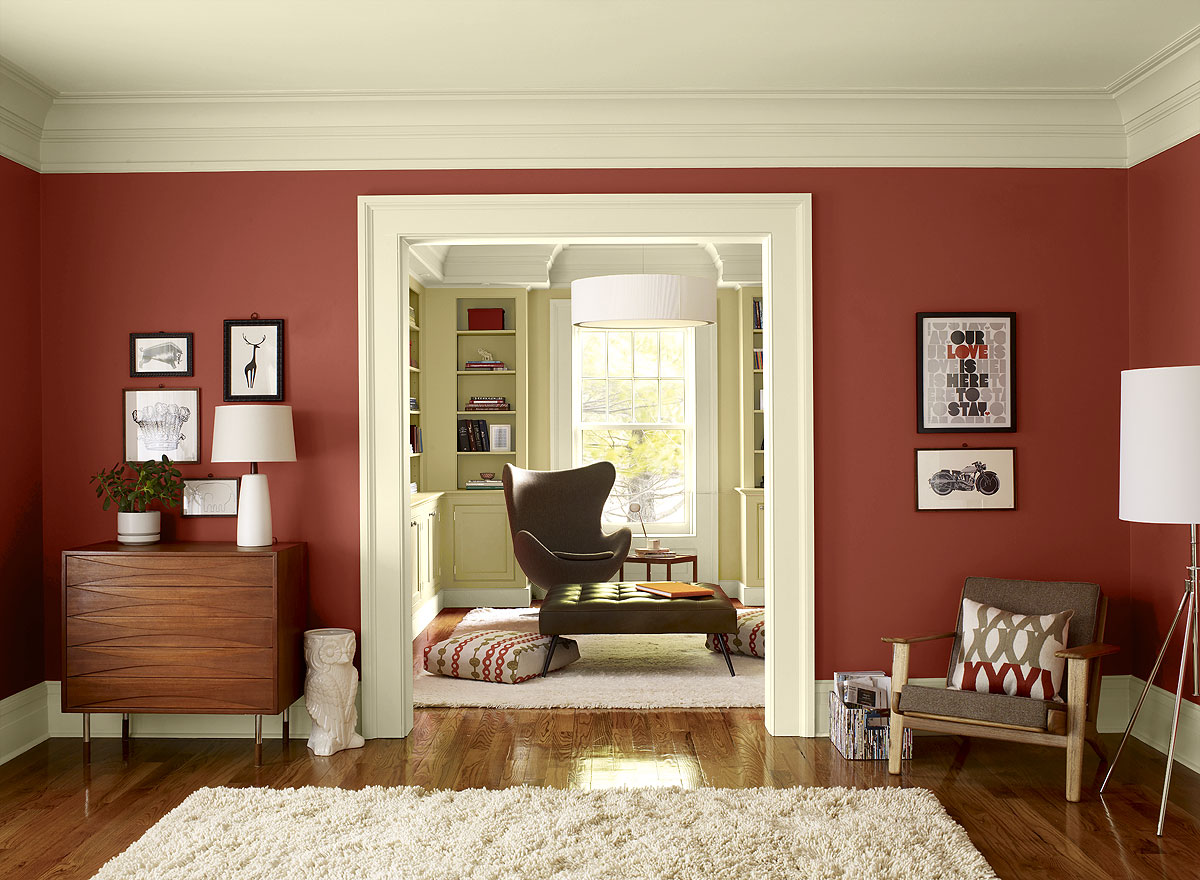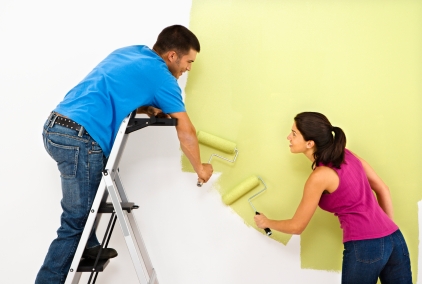Do it easy, do it well.
Make your projects from the beginning to the end like a professional with the General Paint “step by step”, where we offer you a complete guide to transform your spaces. From the protection and remodeling to maintenance and application of our products, always get the best results.
Dare to reinvent your environments by the hand of General Paint, the quickest and easiest way to carry out your projects, without complications!
We offer a wide variety of paint products to help you in your designs.
Use our dealer finder to find the closest General Paint store or retailer.
Explore colour with our new Color Journeys™ colour system
Step 1 - Choose a paint colour
You’ll have no problem finding the ideal bathroom colour within General Paint’s extensive Color Journeys system. Bathrooms should exude freshness, cleanliness and comfort, so we highly recommend using neutral, blue and turquoise shades.
Step 2 - Paint
First, to prevent paint stains, cover your floor and bathroom fixtures with plastic sheeting. Next, seal all wall cracks and holes with filler. Bathroom paint must withstand a high degree of humidity and moisture. We recommend our quick-drying, stain-resistant, easy-to-clean Kitchen and Bath paint, either in eggshell or semi-gloss. It also contains a fungicidal agent to prevent mildew growth.
Step 3 - Add decorative objects
Give your bathroom that special touch with decorative objects like plants, paintings, decorative stones, towel racks, and soap dishes that blend or contrast with bathroom colour. Creating a bathroom spa-like oasis within your home is easy. Just select and coordinate your accessories.
Step 1 - Choose your colour palette
Many colour possibilities from warm shades to cool or neutral ones will give your living room the fresh and warm touch you desire and set the stage for relaxation and family time.
Step 2 - Get ready
Cover nearby surfaces and furniture to avoid staining them with paint.
Step 3 - Prepare the surface
Scrape and sand areas where paint is loose. Sand the entire surface lightly and clean off the sanding dust. Apply a primer specifically made for the surface you are going to paint.
Step 5 - Apply your personal touch
A living room should be intimate and inviting. Add decorative objects paintings, flowers, plants, bookcases, textiles in shapes and colours that accentuate, contrast or combine with your colour palette. Remember that your living room is a reflection of you and your home’s inhabitants.
Step 1 - Define your style
First, define the style of kitchen you want traditional, casual or contemporary, taking into account any kitchen furniture and decorative objects you may already have.
Step 2 - Prepare painting surfaces
Before painting, remove all dirt, mildew and dust from wall surfaces. Scrape and lightly sand concrete, stone, or stucco walls and remove flaking paint. Fill small holes and cracks with filler. Apply a primer made especially for the type of wall (drywall, wood, concrete, etc.) you are painting. We recommend our assortment of Baseline Primers specifically formulated for the job you are doing.
Step 3 - Select your colour combination
Scrape and sand areas where paint is loose. Sand the entire surface lightly and clean off the sanding dust. Apply a primer specifically made for the surface you are going to paint.
Step 4 - Paint
We recommend our quick-drying, stain-resistant, easy-to-clean Kitchen and Bath paint, either in eggshell or semi-gloss. It also contains a fungicidal agent to prevent mildew growth.
Step 5 - Protect your kitchen furniture and cabinets
Kitchen drawers, cabinets, doors and furniture are subject to daily wear-and-tear. Keep them fresh and protected with Melamine, a low lustre finish for interior surfaces with a low odour urethane reinforced coating.
1 - By favourite colour
A good departure point for selecting a colour palette for your project is basing it on your favourite, most inspiring colour – the colour that provides you with a sense of well-being. You can explore innumerable monochromatic colour schemes — choosing various shades of your favourite colour or two complementary colours that will permeate your environment with style and personality.
How to do it
Choose a wall colour in a lighter shade than your upholstery colours. Add colour accents that coordinate with the predominant colour. If your carpets are multi-coloured, paint three walls (60% of your space) with a colour similar or lighter than the predominant colour in the carpet pattern, and then paint the remaining walls with the second most predominant carpet colour. Add that special decorative touch with vases, curtains, lamps and other accessories that coordinate with the upholstery.
2 - By furniture fabric
Another way to choose your ideal colour scheme is by the colour of your furniture. Surely there’s a favourite chair or sofa in your home. Creating a detailed decorating colour scheme based on the upholstery will create an inviting, inspiring ambiance.
How to do it
Choose a wall colour in a lighter shade than your upholstery colours. Add colour accents that coordinate with the predominant colour. If your carpets are multi-coloured, paint three walls (60% of your space) with a colour similar or lighter than the predominant colour in the carpet pattern, and then paint the remaining walls with the second most predominant carpet colour. Add that special decorative touch with vases, curtains, lamps and other accessories that coordinate with the upholstery.
3 - By special decorative objects
An antique lamp, work of art or intimate corner lamp can also be a departure point for colour palette selection. If your decorating takes inspiration from a favourite object, the object will immediately become the center of attention among the myriad colours and shapes.
How to do it
Base your decoration on the lightest and darkest colours of the object, and then incorporate a third complementary accent colour.
© 2025 General Paint. All Rights Reserved.
Accessibility Statement – Privacy Policy | Terms of Use | Do Not Sell or Share My Personal Information




